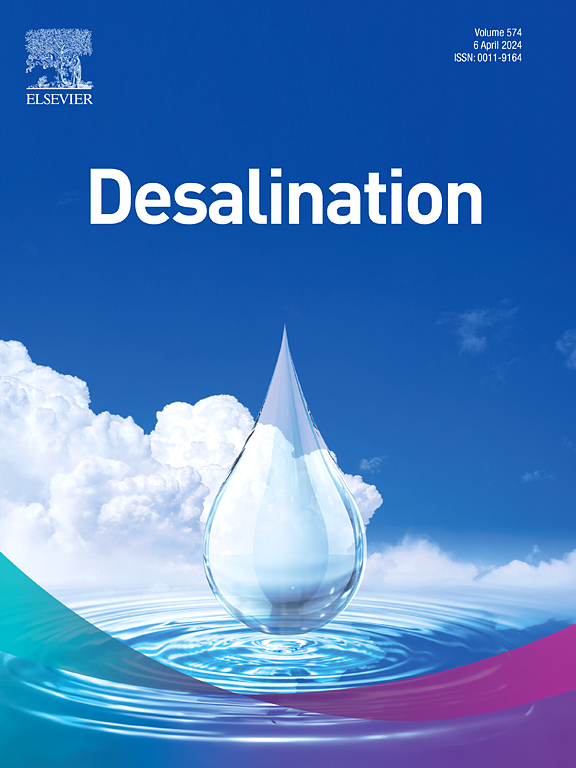Investigation into highly selective uranium adsorption using a water-stable chitosan/ellagic acid/Cu-metal–organic framework material
IF 8.3
1区 工程技术
Q1 ENGINEERING, CHEMICAL
引用次数: 0
Abstract
To mitigate the shortage of land uranium (U) resources and environmental pollution caused by uranium mining and smelting, a chitosan/ellagic acid/Cu-metal–organic framework (MOF) material (CEM) was synthesized for U extraction from seawater. CEM, a phenolic salt ligand MOF material, exhibited superior adsorption selectivity for uranium compared to an ellagic acid/Cu-MOF material (EM) according to the experimental results. The Kd (distribution coefficient) of CEM for uranium was 16.4 times higher than that of EM, and its stability in water significantly exceeded that of EM. At 308 K, the U adsorption capacity of CEM reached 796 mg/g, maintaining a high rate above 93% even after 7 adsorption–desorption cycles. The uranium adsorption of CEM involves a spontaneous endothermic reaction with amino, hydroxyl, and carboxyl groups on the surface. In conclusion, CEM exhibits promising potential as an effective method for extracting U from seawater.
求助全文
约1分钟内获得全文
求助全文
来源期刊

Desalination
工程技术-工程:化工
CiteScore
14.60
自引率
20.20%
发文量
619
审稿时长
41 days
期刊介绍:
Desalination is a scholarly journal that focuses on the field of desalination materials, processes, and associated technologies. It encompasses a wide range of disciplines and aims to publish exceptional papers in this area.
The journal invites submissions that explicitly revolve around water desalting and its applications to various sources such as seawater, groundwater, and wastewater. It particularly encourages research on diverse desalination methods including thermal, membrane, sorption, and hybrid processes.
By providing a platform for innovative studies, Desalination aims to advance the understanding and development of desalination technologies, promoting sustainable solutions for water scarcity challenges.
 求助内容:
求助内容: 应助结果提醒方式:
应助结果提醒方式:


